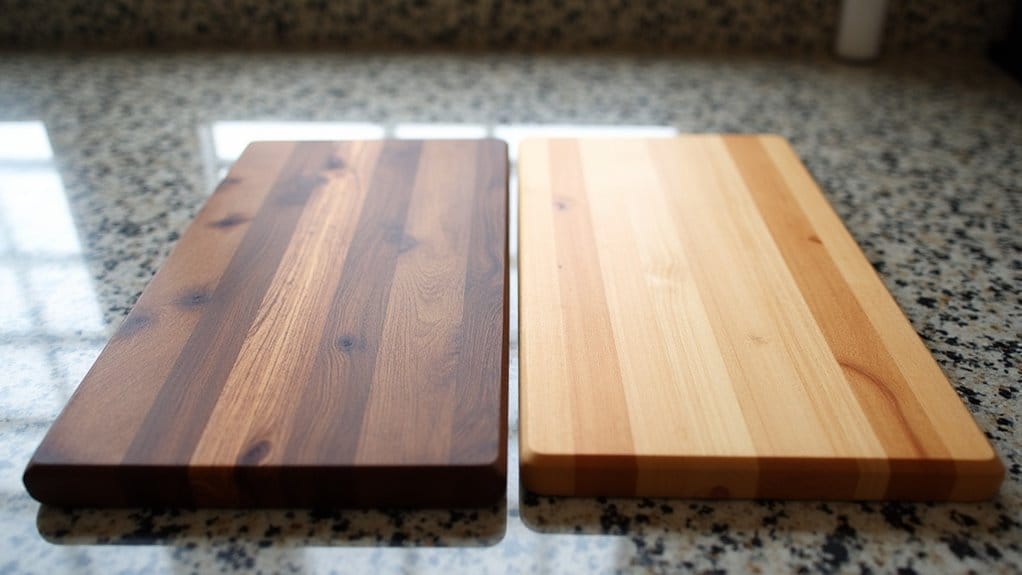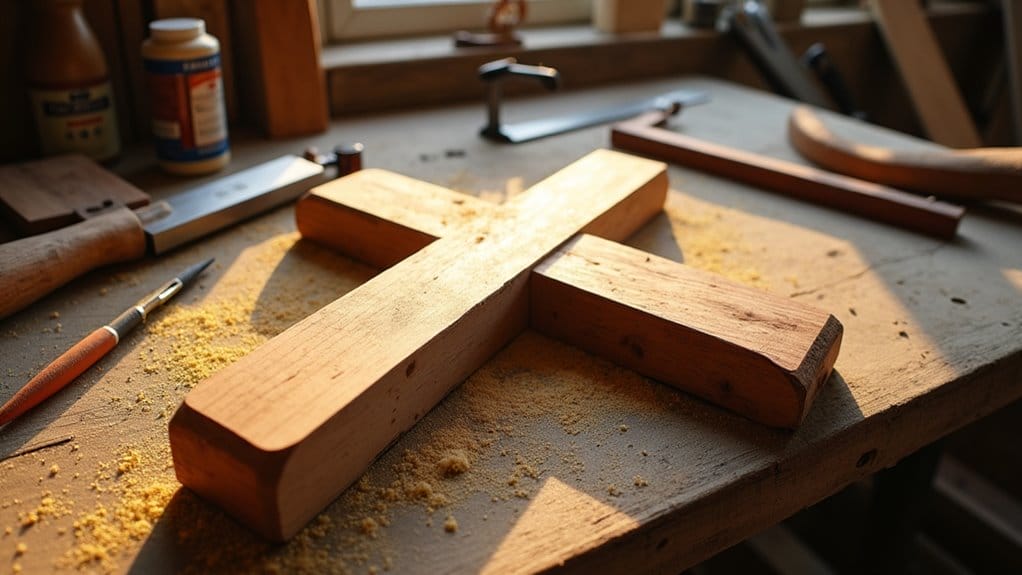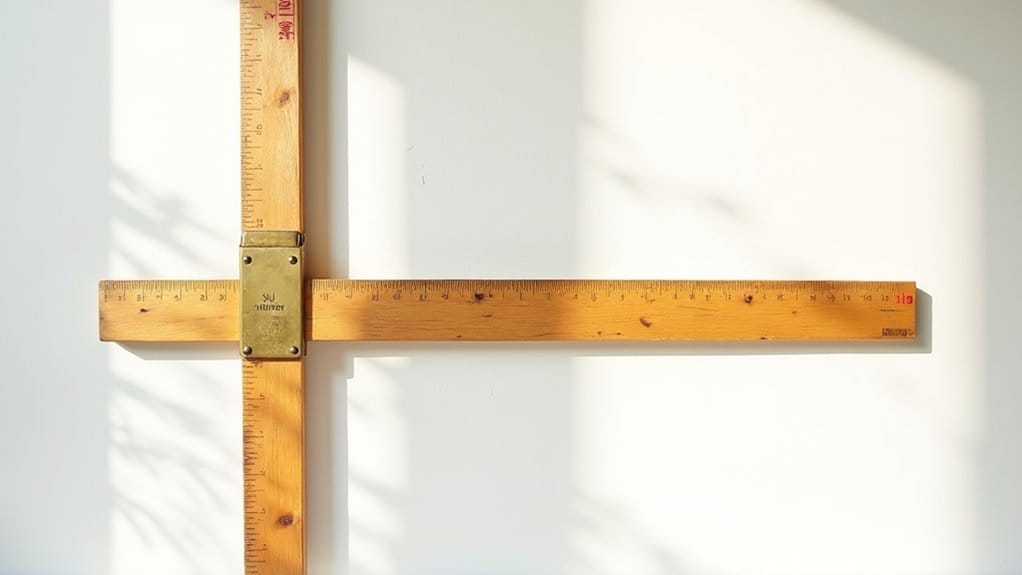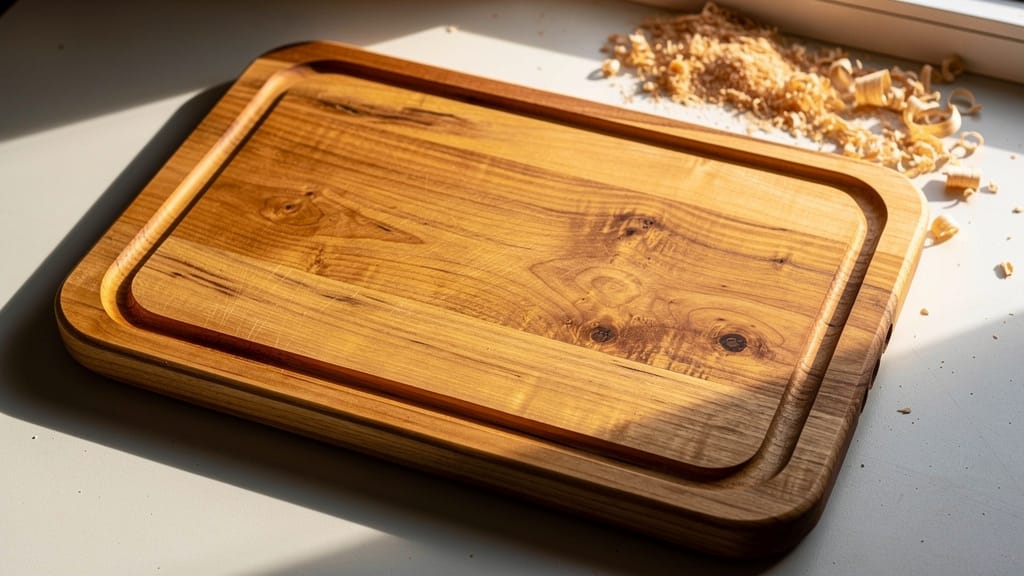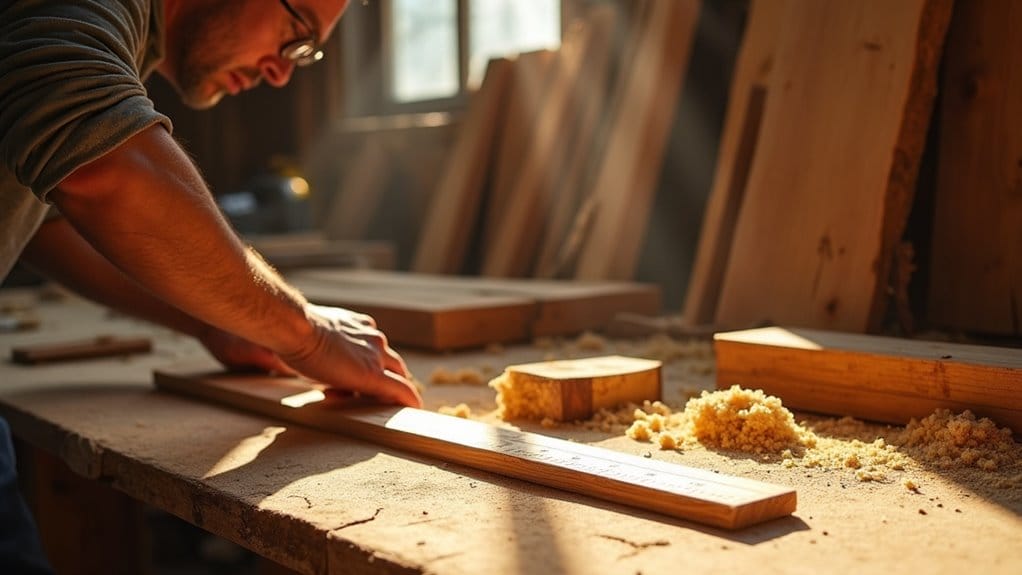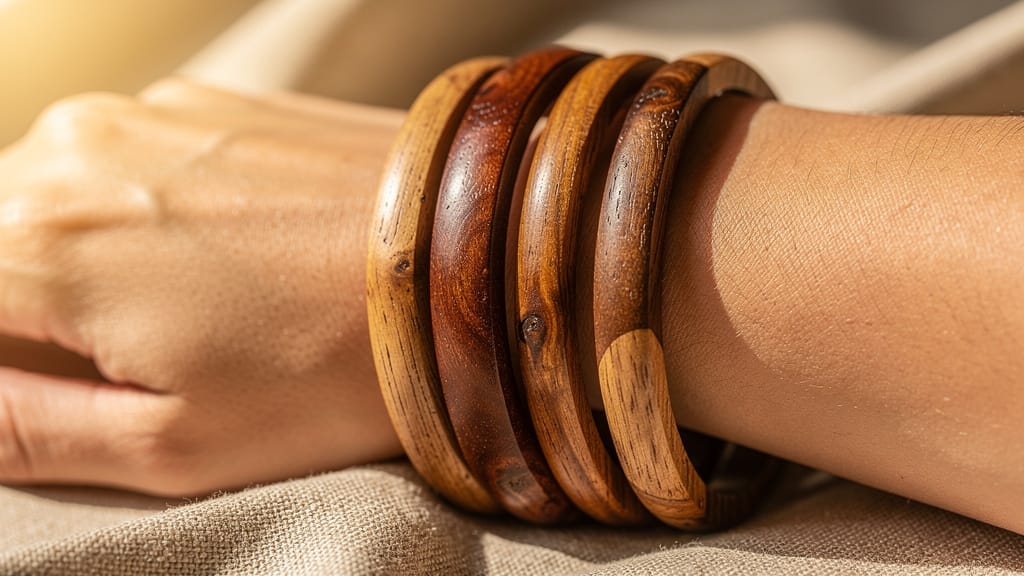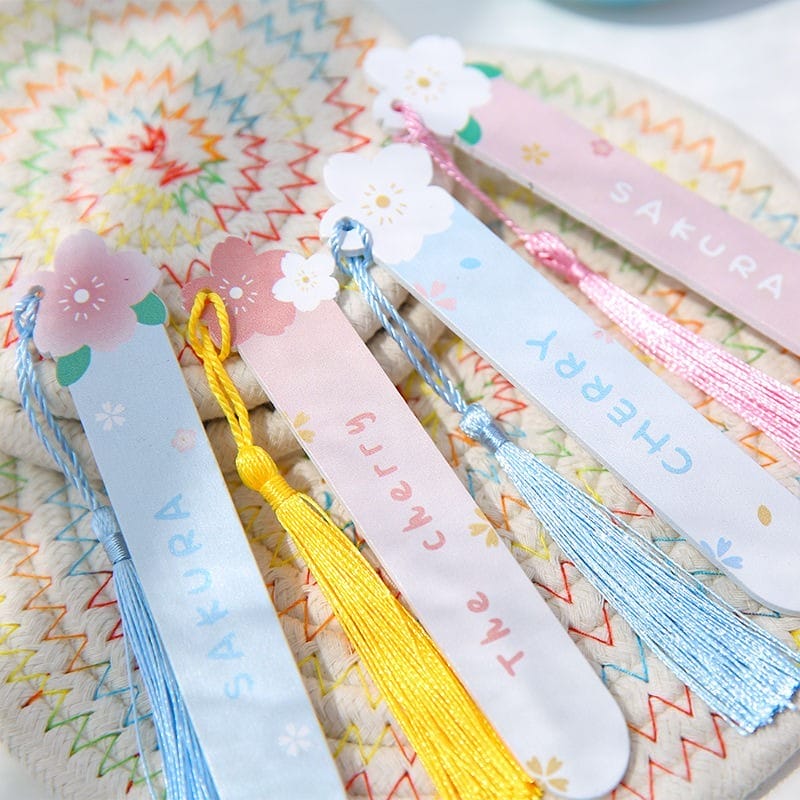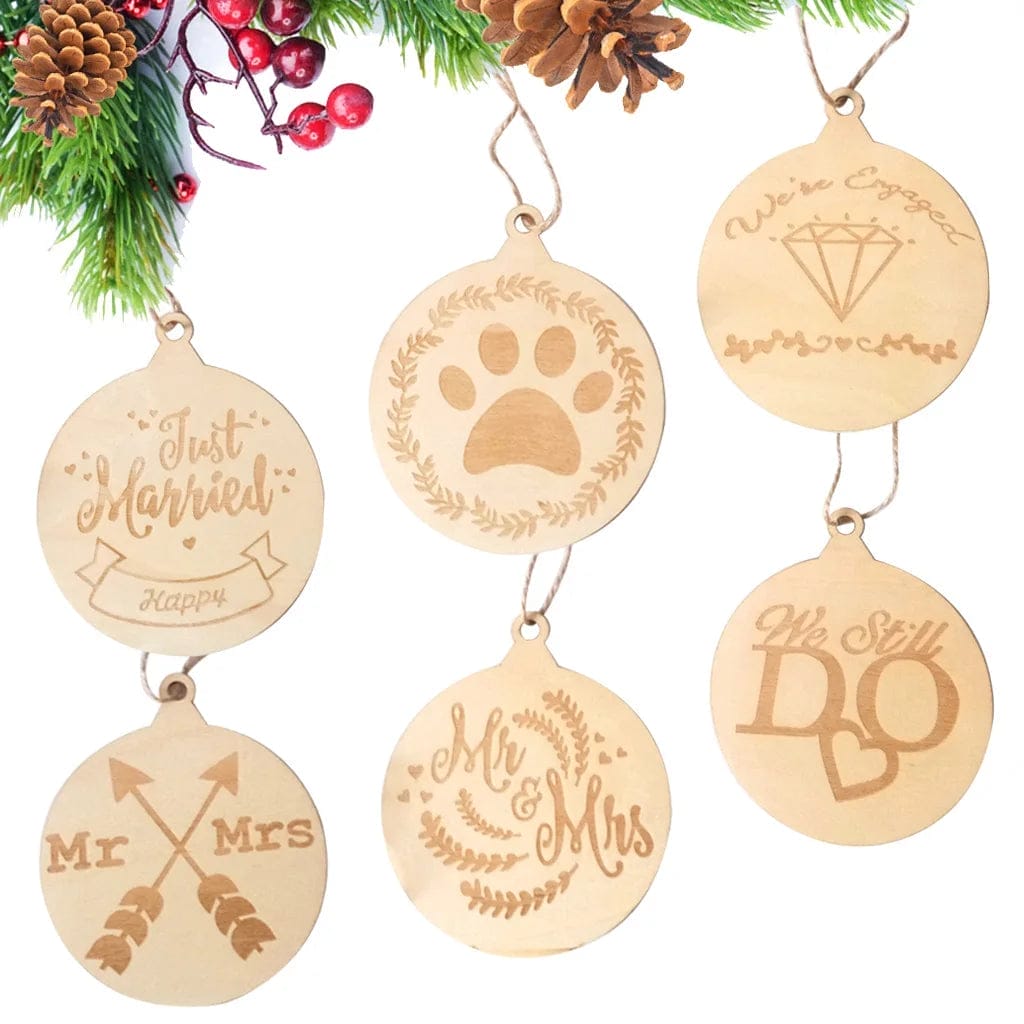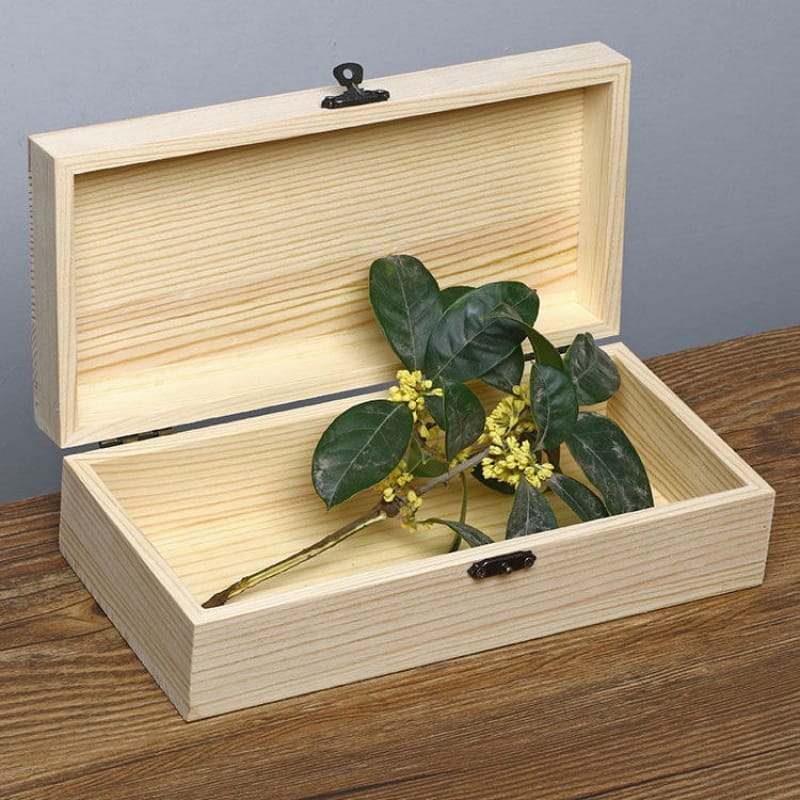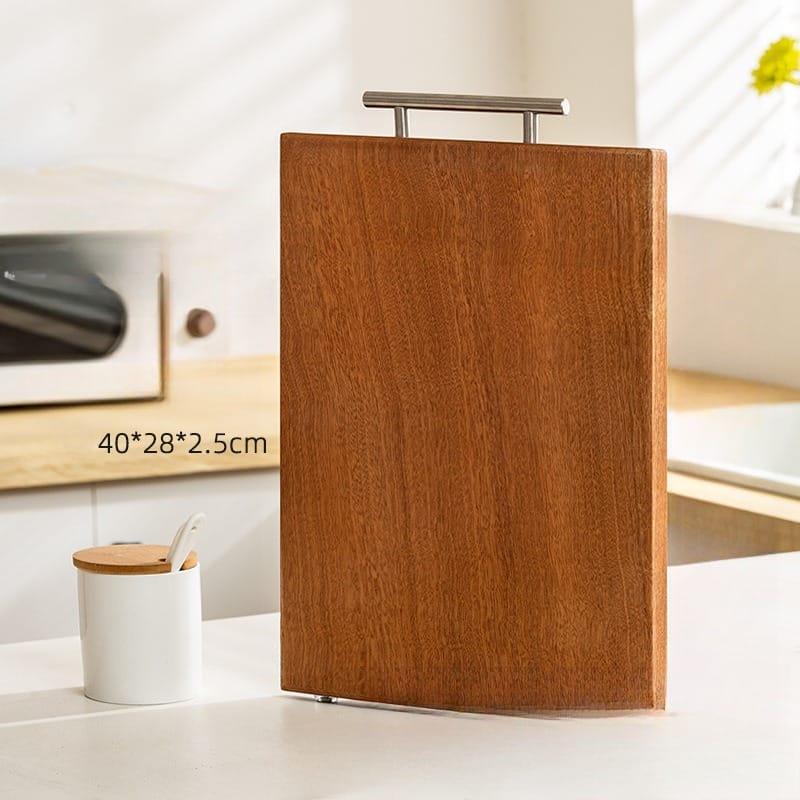When planning to order wooden cutting boards, it’s essential to choose your material wisely. The right wood can keep your knives sharp, resist bacteria, and last for decades, while the wrong choice might split, warp, or even contaminate your food. So, what wood is good for cutting boards?
What makes certain woods perfect for cutting boards isn’t just their hardness. It’s a combination of specific properties that create the ideal food preparation surface. Let’s explore what makes some woods stand out above the rest.
Key Takeaways
- Maple is the best overall choice for cutting boards. This is due to its superior strength, closed grain structure, and gentle impact on knives.
- Walnut offers excellent durability with its closed grain. It also features beautiful, dark tones that effectively hide stains.
- Teak’s natural oils and dense grain make it exceptionally resistant to water and mold. But it requires regular maintenance.
- Avoid softwoods like pine, toxic woods like birch, and open-grain woods like oak, as they can harbor bacteria.
- Select hardwoods with closed-grain structures that resist bacterial growth and require regular oiling for optimal food safety.
Best Wood for Cutting Boards: Hardwood Options
Maple stands out as the champion hardwood due to its superior strength and resistance to knife dulling.
Walnut’s rich dark beauty and teak’s exceptional water resistance make them excellent alternatives.
Cherry catches the eye with its color that deepens beautifully over time.
Maple‘s Durability and Strength
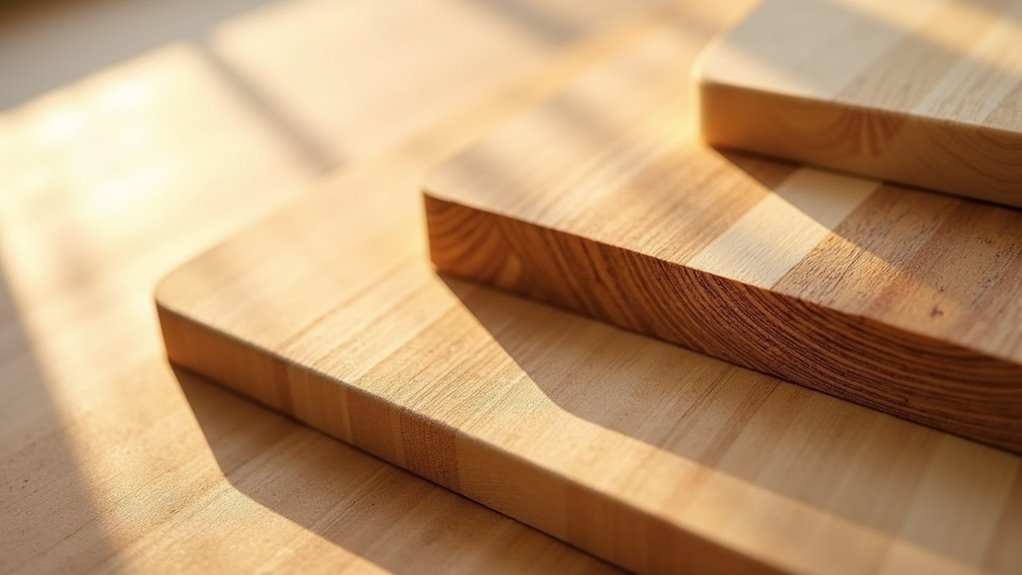
Maple’s stellar reputation in the cutting board world stems from its exceptional durability and strength. With a Janka hardness rating of 1450, this hardwood resists scratches and dings while remaining gentle on your knife edges.
You’ll appreciate maple’s closed grain structure. It prevents bacteria absorption and makes your board more hygienic for food prep.
When you invest in a maple cutting board, you’re getting a kitchen workhorse that’ll last over a decade with proper care.
Beyond its impressive durability, maple’s light, warm tones, and subtle grain patterns will enhance your kitchen’s aesthetic appeal.
Walnut‘s Rich Dark Beauty

Among premium hardwoods, walnut stands out for its luxurious chocolate-brown tones and distinctive grain patterns. It transforms your wood cutting board into a stunning kitchen centerpiece. You’ll appreciate its perfect balance of durability and knife-friendly properties, with a Janka rating of 1010 that won’t dull your blades.
| Feature | Benefit | Maintenance |
|---|---|---|
| Closed grain | Moisture resistance | Oil monthly |
| Dark color | Hides stains | Clean after use |
| Natural beauty | Visual appeal | Avoid soaking |
The natural resistance to bacteria and moisture of walnut cutting boards makes them a practical choice. And their rich aesthetics elevate the appearance of your kitchen.
Teak‘s Water-Resistant Properties

A champion among waterproof hardwoods, teak boasts natural oils that make it exceptionally resistant to moisture and decay.
This wood is particularly appealing. This is due to its dense grain structure, which prevents bacterial growth and mold formation.
With a Janka hardness rating of 1155, teak’s durability guarantees your knives won’t easily damage the surface.
Its golden-brown hue adds elegance to your kitchen. And its water-resistant properties protect against warping and splitting.
Just remember to maintain your teak board with food-grade mineral oil periodically to preserve its natural protective qualities and extend its lifespan.
Cherry‘s Attractive Color Changes

Cherry’s rich, warm tones make it a stunning choice for cutting boards. The wood naturally darkens over time when exposed to air and light.
This rich hue combines beautifully with cherry wood’s unique grain patterns, featuring distinctive swirls and knots that create one-of-a-kind pieces for your kitchen.
Cherry’s closed grain structure makes it naturally resistant to bacteria and easy to clean. With a Janka hardness rating of 995, it’s tough enough to withstand daily use while remaining gentle on your knives.
Plus, since it’s sustainably sourced from North American forests, you’re making an environmentally conscious choice.
Bamboo’s Sustainable Strength and Beauty

Bamboo’s light, natural tones give it a clean, modern look that fits well in any kitchen. Over time, bamboo may develop a slightly warmer hue, enhancing its natural appeal.
This fast-growing grass features a unique linear grain pattern. This creates a smooth and uniform surface that is both attractive and functional for cutting boards.
Bamboo’s dense, hard surface makes it highly resistant to knife marks and bacteria. This ensures easy cleaning and long-lasting durability.
With a Janka hardness rating around 1380, bamboo is harder than many hardwoods. Bamboo cutting boards offer excellent cutting resistance while being gentle on your knives.
Additionally, bamboo is an eco-friendly choice due to its rapid renewability and minimal environmental impact. It’s a smart option for sustainable kitchens.
Properties That Make Wood Food-Safe

When choosing a cutting board, opt for wood with a tight grain pattern, which naturally repels bacteria from penetrating the surface.
Look for woods with antimicrobial qualities, which actively fight harmful bacterial growth through their natural compounds.
Your cutting board should also come from trees that produce non-toxic sap. This ensures your food preparation remains safe even as the wood ages and comes in contact with your ingredients.
Tight Grain Prevents Bacteria
The tight grain structure of hardwoods plays a crucial role in making them suitable for food-safe chopping boards.
Closed-grain woods like maple and walnut naturally resist bacteria. Because their dense fibers minimize surface porosity where harmful microorganisms could hide.
When you choose hardwoods for your chopping board material, you’re getting both inherent antimicrobial properties and a tight grain structure that prevents moisture absorption.
End grain cutting boards offer additional protection by allowing your knife to cut between wood fibers rather than across them. This helps keep bacteria from becoming trapped on the surface.
Antimicrobial Natural Properties
Several hardwoods naturally fight bacteria on their surfaces. This makes them excellent choices for kitchen cutting boards. When you choose an end-grain cutting board, you’ll benefit from the wood fibers’ self-healing abilities as your knife cuts between them.
| Wood Type | Antimicrobial Level | Best Use |
|---|---|---|
| Maple | High | Daily Use |
| Walnut | High | Premium Boards |
| Oak | Low | Avoid |
| Mahogany | Low | Avoid |
| Bamboo | Medium | Light Use |
Unlike plastic cutting boards, hardwoods actively reduce bacterial counts over time. They make your cutting surface safer for food preparation.
Non-Toxic Sap Content
When selecting wood for cutting boards, it is essential to consider the sap content and toxicity levels. Select food-safe woods with low sap content to prevent your cutting board from contaminating your food.
Closed-grain woods are particularly effective. Their tight fiber structure prevents sap from seeping out during use.
Avoid toxic woods like birch, pine, and rosewoods. Instead, opt for non-toxic woods that rank well on the Janka hardness scale, such as maple (1450).
Regular treatment with mineral oil will help seal these safe woods, maintaining their protective properties.
Woods to Avoid in Cutting Board Construction

Steer clear of soft woods like pine and tulip poplar. They easily dent and harbor harmful bacteria in their porous surfaces.
Toxic woods can leach dangerous sap into your food, making them completely unsuitable for cutting boards.
Soft Woods Are Unsafe
Avoid soft woods like pine and birch due to their high porosity risk, which creates perfect hiding spots for harmful bacteria. These materials don’t meet food safety guidelines that specifically recommend hardwoods for food contact surfaces.
Soft woods also accelerate knife dulling due to their tendency to scar and gash easily. Their durability concerns mean you’ll need to replace them more frequently. This makes them an impractical and potentially dangerous choice for your kitchen.
Woods Containing High Toxins
Several popular wood varieties pose serious health risks when used in cutting boards, despite their attractive appearance or widespread availability. Avoid birch and pine due to their toxic saps and resins that can contaminate your food.
Rosewood contains harmful compounds that may cause skin and respiratory issues. Mahogany and oak’s porous nature creates breeding grounds for bacteria.
| Wood Type | Primary Hazard | Risk Level |
|---|---|---|
| Birch | Toxic Saps | High |
| Pine | Harmful Resin | High |
| Rosewood | Toxic Compounds | Severe |
Don’t let the beauty of these woods deceive you. They’re unsuitable for food preparation and can compromise your health through direct contact or bacterial growth.
Woods That Harbor Bacteria
Many common wood types can turn your cutting board into a breeding ground for harmful bacteria.
Avoid woods with large pores like mahogany and oak. Their porous nature provides perfect hiding spots for bacteria growth. Similarly, softwoods such as pine and birch aren’t safe choices due to their toxic saps that can leach into your food.
When selecting wood for cutting boards, opt for hardwood varieties with closed grain structures, like maple and walnut.
These woods don’t harbor bacteria as readily and are much easier to maintain. Their dense composition helps prevent moisture absorption. So they reduce the risk of contamination and bacterial growth.
Maintaining Your Wood Cutting Board

Proper maintenance is key to extending the life of your wooden cutting board and keeping it safe for food preparation.
When cleaning your hardwood board, use warm, soapy water and a sponge. Then, dry it thoroughly before storing it upright. Don’t put it in the dishwasher, as this can damage the wood.
To protect the board’s surface, apply food-safe mineral oil monthly, especially if you’re using porous woods for making your cutting board.
Regular treatment with food-safe mineral oil helps seal porous wood surfaces and maintain your cutting board’s protective barrier against moisture.
You can remove surface scratches with fine-grit sanding, followed by a fresh coat of oil.
Store your board in a cool, dry place, away from direct sunlight, for optimal storage.
Final Words: What Wood Is Good for Cutting Boards?
Choose dense hardwoods like maple, walnut, or teak for your cutting board. They’re naturally resistant to bacteria and won’t dull your knives quickly.
Remember to avoid softwoods and porous options like oak. Keep your board well-maintained with regular oiling and proper cleaning, and it’ll serve as a safe, reliable kitchen tool for years to come.
We provide a diverse selection of wooden cutting boards, with options for wholesale and personalized customization. Reach out to us for further details.
Frequently Asked Questions
What Type of Wood Is Best for a Cutting Board?
Maple is your best choice for a cutting board due to its ideal density and knife-friendly surface. If you want an alternative, walnut’s also excellent with its durability and natural beauty.
What Woods to Avoid for a Cutting Board?
Avoid softwoods like pine and cedar, as well as birch, oak, teak, and rosewoods, for the best cutting board. Also, never use MDF or particleboard as they’re not food-safe and can deteriorate with moisture.
What Do Professional Chefs Use for Cutting Boards?
Professional chefs typically use end-grain hardwood boards made from maple or walnut. They’re at least 1.5 inches thick, regularly oiled with mineral oil, and chosen for durability and knife-friendly properties.
What Is the Most Hygienic Wood for Cutting Boards?
Maple’s your most hygienic choice for cutting boards. This is due to its tight grain and natural antibacterial properties. It’s also hard-wearing, and bacteria die off quickly on its surface.






